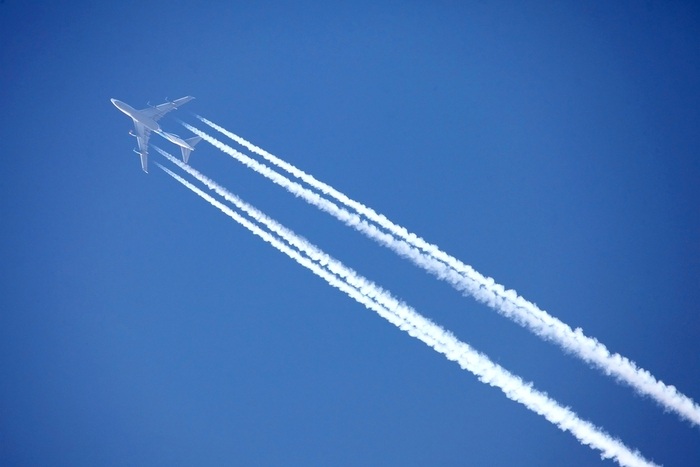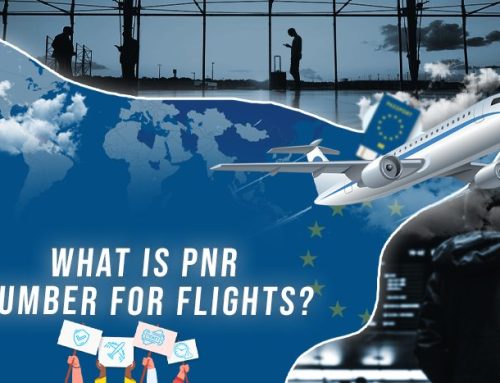Perspective is a funny thing. When you see a plane flying high above you, it seems so tiny – close enough that you can hear it sometimes, but far enough away that it looks almost like a toy. Yet, when you’re on the plane looking down at the world below, the world appears like a dollhouse with neat rows of houses, perfectly laid out parks, and bodies of water. If you squint hard enough, you may be able to see people playing, or crowds gathered, depending on how high your plane is flying.
But how high does a typical plane fly? Planes gain altitude at a high rate when they take off and start the descent. That’s why your ears pop, while you’re typically fine once the flights reach a stable altitude. Depending on the type of plane, they can typically fly between 10,000 feet and 38,000 feet, but there are other factors that impact exactly how high an aircraft can fly.
Key Takeaways
- Commercial airplanes typically fly at altitudes between 31,000 and 38,000 feet, which is about 5.9 to 7.2 miles above the ground, while smaller planes and helicopters fly at lower altitudes.
- The altitude at which a plane can fly depends on several factors, including the type of plane, its weight, the weather conditions, and the distance it is flying.
- Wind conditions play a significant role in how high a plane can fly. Flying with the wind direction can reduce air resistance and enable the plane to fly quicker and lower.
- Higher temperatures and humidity levels can impact an aircraft’s performance by reducing its lift and affecting air density, respectively.
- Ultimately, the pilot is responsible for determining the safest and most efficient altitude for the aircraft, taking into account all of these factors.
How High Does A Plane Typically Fly?
When you look out the window, you’re typically gazing at the clouds, and while they don’t look like they’re moving that fast, you’re actually slicing through them at high velocities. Commercial airplanes – typically those with passengers – fly between 31,000 and 38,000 feet in the air. It’s about 5.9 to 7.2 miles above the ground, which doesn’t seem that high when you really think about it. Within the first 10 minutes or so of your flight, your plane will hit its stride, and your pilot will engage autopilot as you cruise at a safe altitude for the rest of the flight until you need to land.
Now, flights can fly higher, but there are risks involved. In the case of an emergency, it would take longer to get down from higher altitudes. A quick descent can cause rapid decompression, which is unsafe for you and the aircraft. Your plane’s weight also impacts how high it can fly as it can be difficult to maintain a higher altitude. From a practical standpoint, planes use less fuel flying higher because the thinner air creates less air resistance. Typically, the higher the altitude, the faster you can fly, decreasing your travel time.
These standards are not the same for smaller planes or helicopters. Small, private planes stay below 15,000 feet, while helicopters are below 10,000 feet. If you use them too high, pilots and passengers could face health issues due to a lack of oxygen. They aren’t equipped with the same technologies and safety features that commercial planes are. These planes are designed to fly shorter distances, mostly for fun rather than to ferry passengers from place to place.
What Factors Impact How High A Plane Can Fly?

Several factors impact the altitude at which planes can fly, including the type of plane you’re in, how far you’re flying, the engine type, the weather conditions, and how heavy your aircraft is, to name a few.
For example, wind conditions play a huge role in how high you can fly. You’ll face less resistance if you’re flying with the wind direction. You can fly quicker and lower when you’re working with the wind. However, if you are flying in the opposite direction, you will fly slightly higher to face less resistance.
Additionally, you fly higher to avoid poor weather conditions, like rain, lightning, snow, and hail. Larger aircrafts should have no problem handling these conditions, while smaller planes may struggle. If your plane is not equipped to do so, you should sit this flight out to protect your safety.
Frequently Asked Questions
-
Why do planes fly at high altitudes?
Planes fly at high altitudes to avoid air traffic, and bad weather and to reduce air resistance, which results in less fuel consumption and faster travel time.
-
What is the typical altitude at which commercial planes fly?
Commercial planes typically fly between 31,000 and 38,000 feet, about 5.9 to 7.2 miles above the ground.
-
Do smaller planes and helicopters fly at the same altitude as commercial planes?
No, smaller planes and helicopters typically fly at lower altitudes. Private planes fly below 15,000 feet, and helicopters fly below 10,000 feet.
-
Can planes fly higher than 38,000 feet?
Yes, planes can fly higher than 38,000 feet, but risks are involved. It takes longer to descend from higher altitudes in case of an emergency, and rapid decompression can occur during a quick descent.
-
How does wind affect the altitude at which planes fly?
Wind conditions significantly affect how high planes can fly. Flying in the wind direction reduces resistance, allowing planes to fly lower and quicker. Flying against the wind requires planes to fly slightly higher to minimize resistance.
-
How does the aircraft’s weight affect how high it can fly?
The heavier the aircraft, the harder it is to maintain a higher altitude. Commercial airlines may reduce the weight of their planes by carrying less fuel or cargo when flying at higher altitudes.
-
What factors affect how high a plane can fly?
The type of plane, engine, weather conditions, weight, and flight duration are some factors that can impact how high a plane can fly. Pilots must consider these factors to ensure a safe and efficient flight for passengers.







